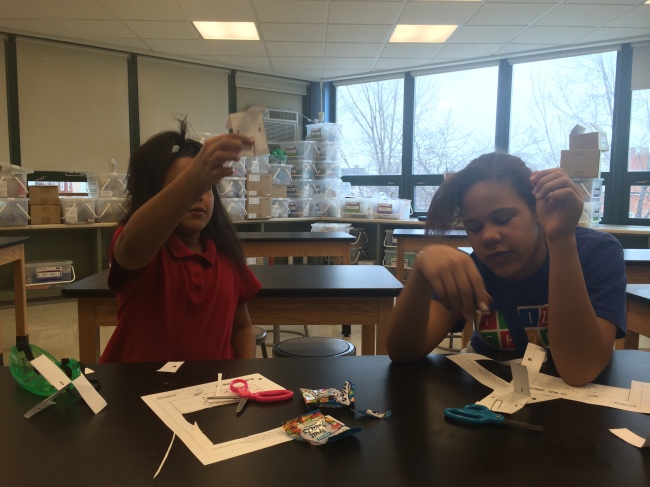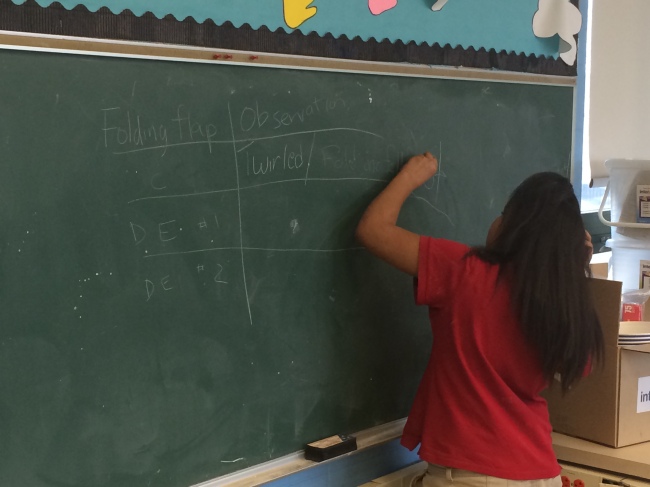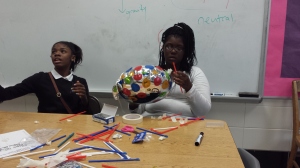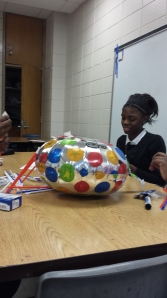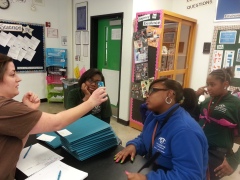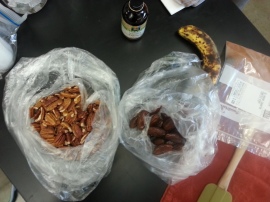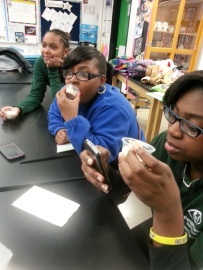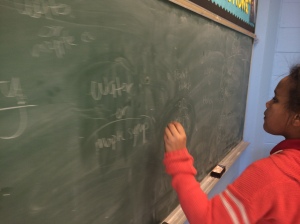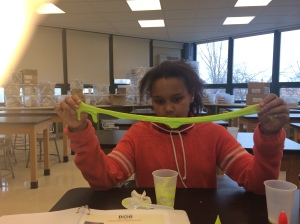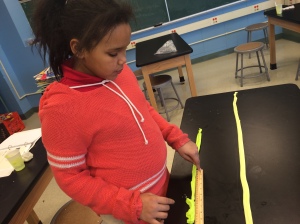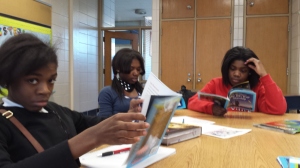On March 21, 2014, STEM facilitator, Tolu Rosanwo walked into her Sisters4Science classroom to find this note on the board:
6th grader, Ashanta Dean left a cheery note on the board and helped set the stage for an afternoon exploring aerodynamics! Ashanta and Brianna Marte had both earned two badges thus far, and that day they were presented with their 3rd digital badge: “Discover: Builiding Models.” The criteria for obtaining the badge was to create a model that relates to an idea or concept and use that model to describe that idea/concept. That day, the girls were to build paper helicopters and see how changes in their mass and propeller length would impact the time it took for them to fall to the ground/twirling motion.
Before building paper helicopters, Tolu decided to give the girls a brief physics lesson on “free fall” and air resistance. She took a piece of paper and a bag of animal crackers and explained that two objects. She told the girls that no matter their mas they should fall to the earth at the same time since the only force working on a free-falling object is the force of gravity. When Tolu had Brianna and Ashanta drop the two objects at the same time, they had difficulty believing her because the animal crackers fell to the ground first! The explanation? Air resistance!
Then, Tolu took two sheets of paper of the same size, and crumpled one up into a ball while leaving the other perfectly flat. When she asked the girls which one would fall first even though the are the same weight, Brianna said, “The balled up one.” Why? Ashanta said, “More of its weight is in the middle.” What physicists we have! The girls dropped the pieces of paper and their hypothesis was correct! More than before, they recognized air resistance to be a force to be reckoned with! After so much thinking, they all had a “Brain Break,” which is part of an initiative to get kids moving in the classroom.
After the Brain Break, the girls dove into building their paper helicopter models. They folded them as indicated on the sheets of paper and tested how folding the paper in different ways and adding paper clips would change how long it took them to fall to the ground and how quickly they would rotate in the air.
Like any good scientists, Ashanta and Brianna also recorded their observations.
Using their observations, they built two more helicopters: one that would take the longest to fall, and the other with the shortest fall-time.
The girls found that an unfolded piece of paper took longer time to fall (with much less rotation) than a folded helicopter with a paper clip at its base.
As the day came to the end, the girls were informed that they certainly met the criteria to receive their third digital badge! In addition, they received Mae Jemison’s 100 Year Starship! This book was generously provided by Stories From Cory, an initiative that provides free books to under-resourced classrooms. Jemison as a role model has been a theme for the Woodson Girls this year, and it is only fitting that they get her book when they build models of their own.
–Tolu Rosanwo





